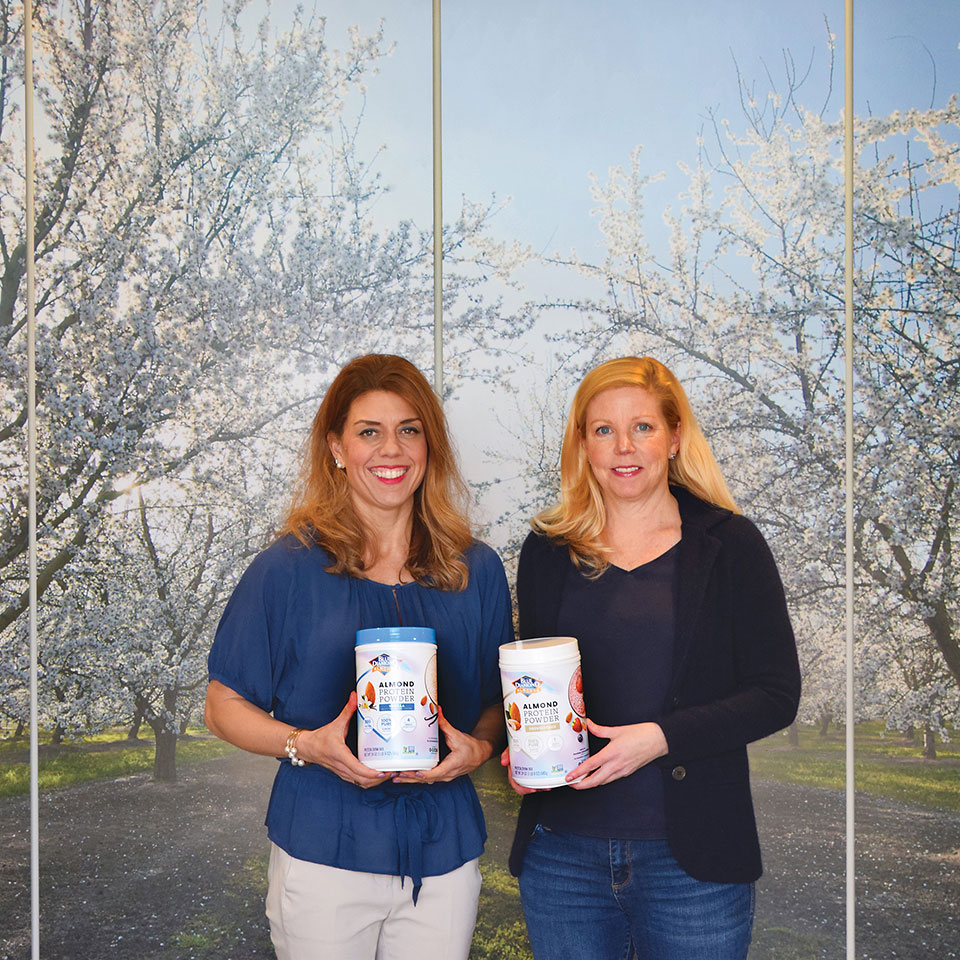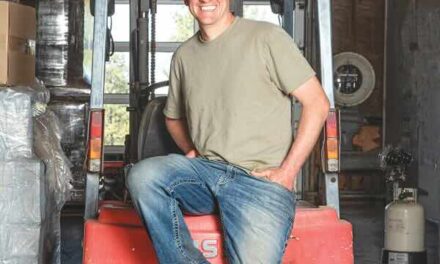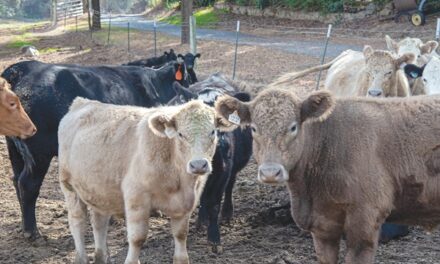Diamonds in the Rough
Sacramento is home to almond growing and innovation
By Tessa Marguerite Outland
February 2020
When early California pioneers discovered that the soil and climate surrounding the Sacramento area was ideal for growing almonds, it spurred the launch of a grower-owned cooperative—the California Almond Growers Exchange.

The exchange (now called Blue Diamond Growers) was founded in 1910 and adopted the symbol of the blue diamond—the world’s rarest diamond—to represent the co-op’s high quality. Today, Blue Diamond Growers is still a nonprofit organization and has expanded from its initial 230 partner growers to more than 3,000 across California.
In the 1930s, approximately 20 million pounds of almonds were produced in California each year. Today, the Almond Board of California estimates that the entire state will produce around 2.20 billion pounds in the 2019/2020 crop year. The number is down slightly from the previous crop-year production of 2.28 billion pounds.
However, the board confirms that almonds are still among California’s top agricultural exports, and the largest tree nut crop in total dollar value and acreage.
Blue Diamond Growers represents more than 50 percent of the total growers in California, according to Lynn Machon, director of corporate communications. As production at Blue Diamond increases, so does the company’s dedication to sustainability and innovation.
The California Almond Objective Measurement Report, published by the USDA National Agricultural Statistics Service, states that since 1973 significant advancements have been made in the industry in the areas of water, nutrient management, air quality and honey bee health, increasing farming efficiencies while minimizing environmental impacts.
The report adds that for every pound of almond kernels there are nearly three pounds of hulls and shells. “At Blue Diamond we strive for no part of the almond going to waste,” says Catherine Campbell, head of sustainability and social impact. “We find ways to optimize every aspect of the almond.”
Campbell affirms that organic waste, such as the almond coproducts of hulls, shells and woody biomass, does not go to landfills. Instead, it is used for animal feed or soil amendments.
California almond growers monitor their orchard’s water consumption while using low-volume irrigation methods to maximize harvest efficiency. Blue Diamond Growers also claims to have led the way in the adoption of integrated pest management programs developed by the University of California.
The Blue Diamond headquarters in Sacramento includes administrative offices, almond processing, shipping, receiving, a nut and gift shop, and the Blue Diamond Almond Innovation Center, the main hub for almond research and development activity.
The center opened in 2013 as the world’s first and only research center dedicated to almond product innovation, says Maya Erwin, vice president of innovation. “It’s designed for culinary exploration,” Erwin adds. “Think of it as a giant kitchen.”
With the center’s staff of master bakers, product developers, process engineers and food scientists, new products and healthy snacks are being made right here in Sacramento every day.
Globally, almonds have become a “cornerstone of the snacking market,” according to Food Navigator, which reports news and trends in the food and drink industry. In 2017, almonds in the bar category increased by 53 percent, reports Food Navigator, making almonds the top nut used in health and energy bars.
Erwin agrees that almonds play into some of the most competitive food categories, including snacking and non-dairy. “Plant-based food trends are really hot right now,” Erwin says. “Consumers are demanding better and better food. A superfood like an almond tastes so good and we can shine in those categories.”
In an effort to be a competitive player in the market, the center is continually testing out new products and flavors. In March, the center will release a new flavor for snack almonds—spicy dill pickle.
As for a new product, soy and whey protein may have met their match with Blue Diamond’s new almond protein powder made from 100-percent almond protein. The product, which comes in Dark Chocolate, Vanilla and Unsweetened, boasts 20 grams of plant-based protein per serving.
“Trends come and go, and we are trying to find the next interesting thing,” Erwin says. “That’s the life of innovators.”
The Blue Diamond Nut & Gift Shop at 1701 C St. is open Monday through Saturday. For more information, visit bluediamond.com.
Tessa Marguerite Outland can be reached at tessa.m.outland@gmail.com. Follow us on Facebook, Twitter and Instagram: @insidesacramento.















